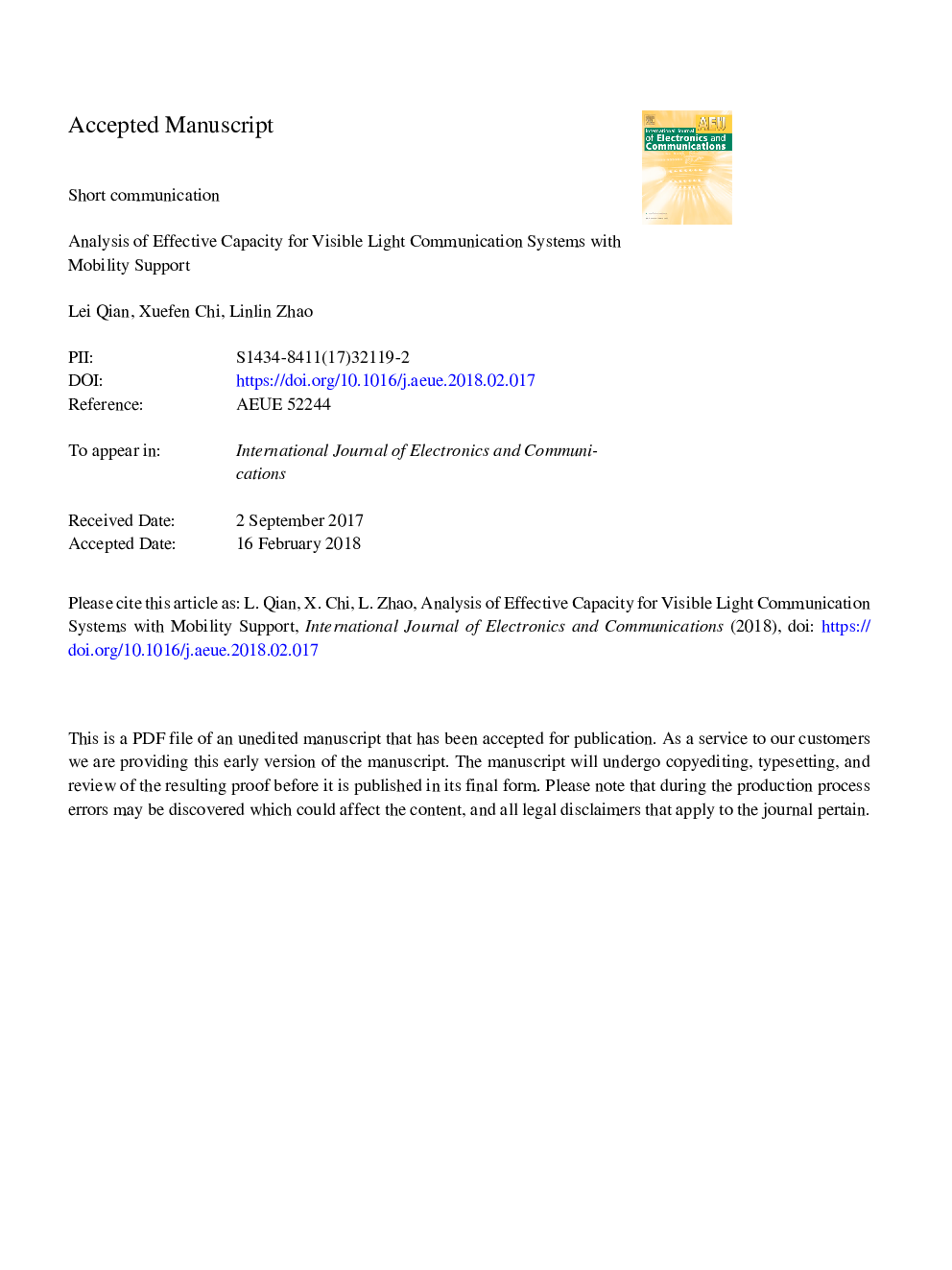| Article ID | Journal | Published Year | Pages | File Type |
|---|---|---|---|---|
| 6879384 | AEU - International Journal of Electronics and Communications | 2018 | 12 Pages |
Abstract
Visible light communications (VLCs) are competitive and attractive candidates for next generation indoor communication networks which are required to support mobility and guarantee delay QoS (Quality of Service) for users. User movement in VLC systems changes the propagation path, including the distance, the angle of incidence and irradiance, all of which have a significant impact on channel gain and link capacity. In this paper, we present a user mobility model for indoor VLC systems with the help of discrete time Markov chain theory. Considering a service process with temporal correlation caused by user mobility, we derive the effective capacity (EC) for VLC systems which characterizes the capacity performance subject to the user's statistical delay QoS. Moreover, the effect of the user's mobility on effective capacity is revealed.
Keywords
Related Topics
Physical Sciences and Engineering
Computer Science
Computer Networks and Communications
Authors
Lei Qian, Xuefen Chi, Linlin Zhao,
